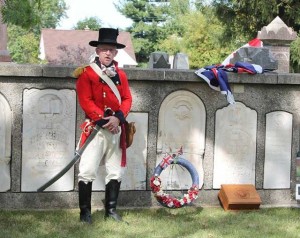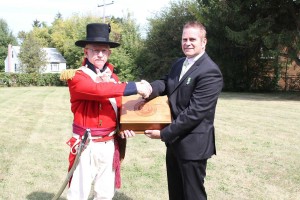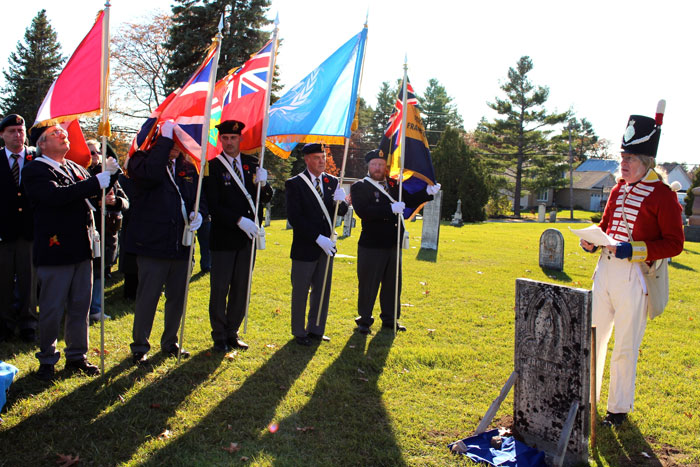Commanding Officer: General Sir Isaac Brock
Jonah Howell
Isaac Howell
1st Flank Company
5th Regiment Lincoln Militia
Commanding Officer: Sir Isaac Brock
William Ketcheson
1st Regiment Hastings Militia
William was b 21 September 1782, in Bedford New York. William was the oldest child of William Ketcheson and Mary Rull. When the war broke out in 1812, William along with three of his brothers (Thomas, Benjamin, Elijah) went to Kingston.
Served as an Ensign for the 1st Regiment Hastings Militia from 2 July 1812 and December 24 1812. Commanded by Captain Jacob Walden Meyers.
William then served as a Lieutenant for the same regiment from March 13th to July 24, 1813 then commanded by Col John Ferguson.
July 4th to the 4th of August, 1814, William was called to take charge of the same regiment till its dismissal.
In 1838 William was made Colonel of the 4th Regiment Hastings Militia after the Rebellion of 1837-1838.
After the wars, he was active in both township and city council meetings. His advice was always sought and highly appreciated.
In his early years he became a Christian and united with the Wesleyan Methodist Church.
[Graveside Team ed — Cemetery GPS coordinates approximate as no definitive location given.]
Elijah Williams2nd Regiment Norfolk Militia
Henry Bostwick
1st Regiment Oxford Militia
Lt. Col Henry Bostwick, Malcolms Mills
Malcolms Mills was the last action of the War of 1812 fought on Canadian Soil. Some 400 soldiers of the 1st Regiment Middlesex Militia under Major John Eakins, 1st Regiment Oxford Militia under Lt. Col. Henry Bostwick, 1st Regiment Norfolk Militia under Lt. Col. Joseph Ryerson and Major William D. Bowen, 2nd Regiment Norfolk Militia under Major George C. Salmon became engaged in a skirmish with Brig. General Duncan McArthur and a force of 700 American troops at Malcolms Mills now called Oakland south west of Brantford.
The Oxford Militia under the command of Lt. Col Henry Bostwick set up a defensive position along the long crest of a hill which gave them a view of a bridge surrounded by marsh. The bridge had been sabotaged and the road barricaded to force the Americans off the road.
The American Cavalry were able to ford the stream and skirmish the Oxfords by surprise and pin the force down as other American troops flanked the Oxfords. This move scattered the Oxford Militia and broke their defense of the position. The Oxfords outnumbered, lost several men dead and wounded and the remainder escaped in the confusion of the battle.
This action despite the losses effectively cut off McArthurs force and prevented him from going further North as he had plans to attack and burn Burford. McArthurs force turned south then west continuing to burn and pillage along the Lake Erie shore and eventually retreated to Detroit.
John Johnson
1st Regiment Prince Edward Militia
Commanding Officer: Captain David Sager
[Graveside Team ed — Cemetery GPS coordinates approximate as no definitive location given.] Continue reading John Johnson
1st Regiment Prince Edward Militia
Francis Button1st Regiment York Militia
Colonel Frances Button came to the Niagara Region of Upper Canada in February of 1798 according to his father, Major John Button’s Upper Canada Land Petition (1763-1865). John Button applied for and received 200 acres of land in York. This was approved on 17 Nov 1801. The family moved to the York/Markham area.
John Buckberry
1st Flank Company
5th Regiment Lincoln Militia
Commanding Officer: Captain Samuel Hatt
Jacob Rombough
1st Regiment Lennox Militia
David Berdan
2nd Regiment Norfolk Militia
At age 15 years David did his duty in defense of the Province during the late War with the United States of America. He petitioned for land at Charlotteville, October 10, 1820. He was granted 200 acres in Woodhouse Township. He was a private in Captain William McCracken’s detactment of the 2nd Regiment Norfolk Militia from 25 Dec 1813 to 24 January 1814 inclusive.



